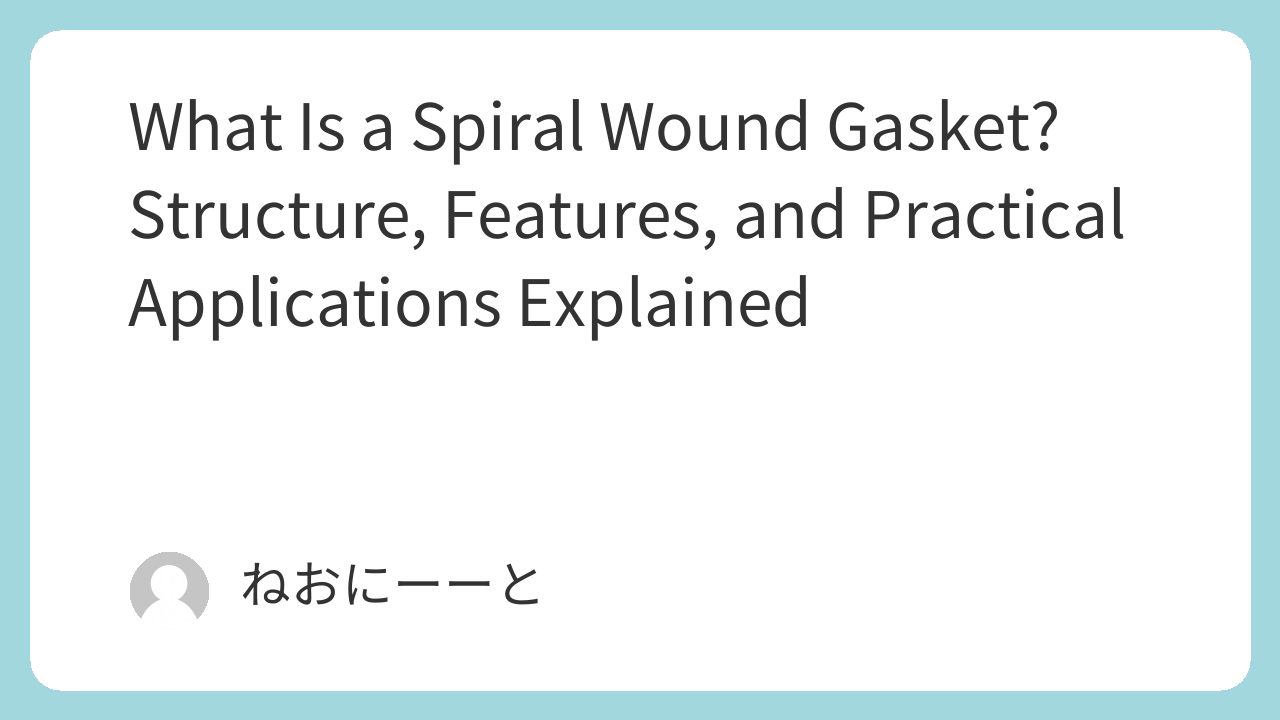In plant piping systems, gaskets are essential for sealing flanges under pressure and temperature fluctuations.
Among them, spiral wound gaskets stand out as one of the most reliable sealing solutions for high-pressure (above 1 MPa) and high-temperature environments.
While continuous plant engineers often recognize spiral wound gaskets as “the standard for high pressure,” many batch plant engineers encounter them less frequently and may not be familiar with their advantages.
This article explains the structure, working principle, types, and materials of spiral wound gaskets in simple terms with diagrams, helping engineers and maintenance staff make safer and more effective selections.
1. What Is a Spiral Wound Gasket?
A spiral wound gasket combines metal strips (hoops) and filler material wound together in a spiral shape.
- Metal provides strength and elasticity.
- Filler ensures sealing performance.
This design makes the gasket resistant to both pressure cycling and thermal changes, offering long-term reliability.
2. Why Can Spiral Wound Gaskets Withstand High Pressure?
Unlike soft gaskets (e.g., rubber or PTFE joint sheets) that easily fail under high loads, spiral wound gaskets belong to the metallic gasket category.
The “V” shape of the wound metal expands under compression, pushing tightly against the flange surface—similar to a V-packing seal.
Layering metal and filler provides both strength and sealing performance.
3. Common Configurations
Spiral wound gaskets come in four main types, selected based on flange design:
- Basic Type → Groove (TG) flanges
- With Inner Ring → Male–Female (MF) flanges
- With Outer Ring → Flat or Raised Face flanges
- With Inner & Outer Rings → Flat or Raised Face flanges (stronger, preferred over outer ring only)
4. Materials
- Metal (Hoop): Common choices include SUS304, SUS316L; special metals (e.g., titanium) for extreme service.
- Filler: Expanded graphite (general utilities), PTFE (corrosive process lines), or other inorganics (less common).
- Reinforcement Rings: Usually stainless steel; carbon steel acceptable for non-corrosive utility lines.
5. Practical Considerations
- Select gasket type according to flange design.
- Confirm pressure class (spiral wound is suited for ≥1 MPa).
- Use expanded graphite + stainless steel for most chemical plant utilities.
- For corrosive media, choose PTFE fillers with compatible metal rings.
- Always cross-check against plant safety standards and test data.
Conclusion
Spiral wound gaskets are a trusted sealing option for high-pressure, high-temperature piping systems.
By understanding their structure, types, and materials, engineers can:
- Select the right gasket for the right flange,
- Ensure safe operation even under 1 MPa or higher,
- Reduce failures and extend equipment life.
For maintenance and design engineers, mastering this knowledge is essential to achieving both safety and efficiency in plant operations.

Comments